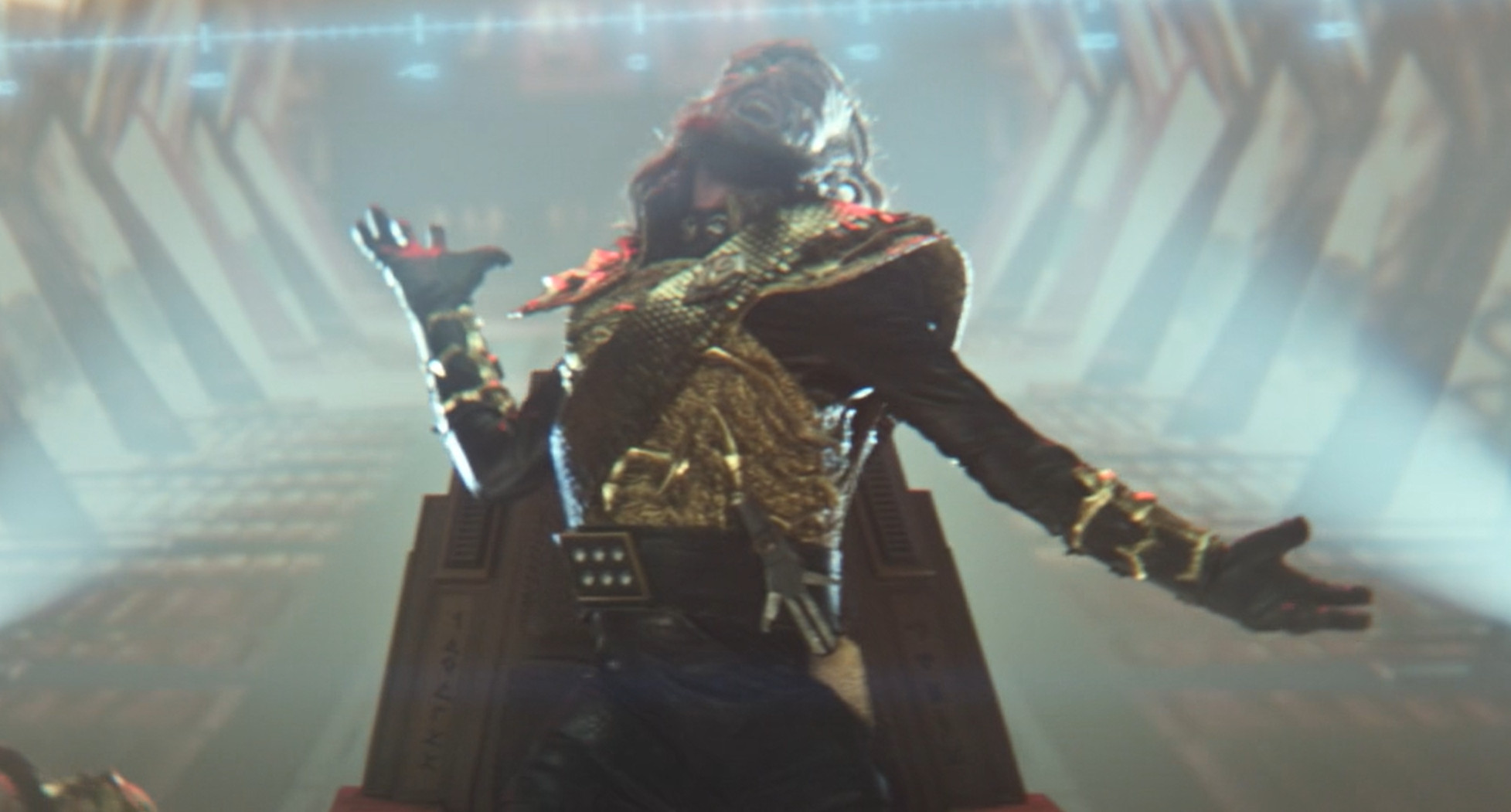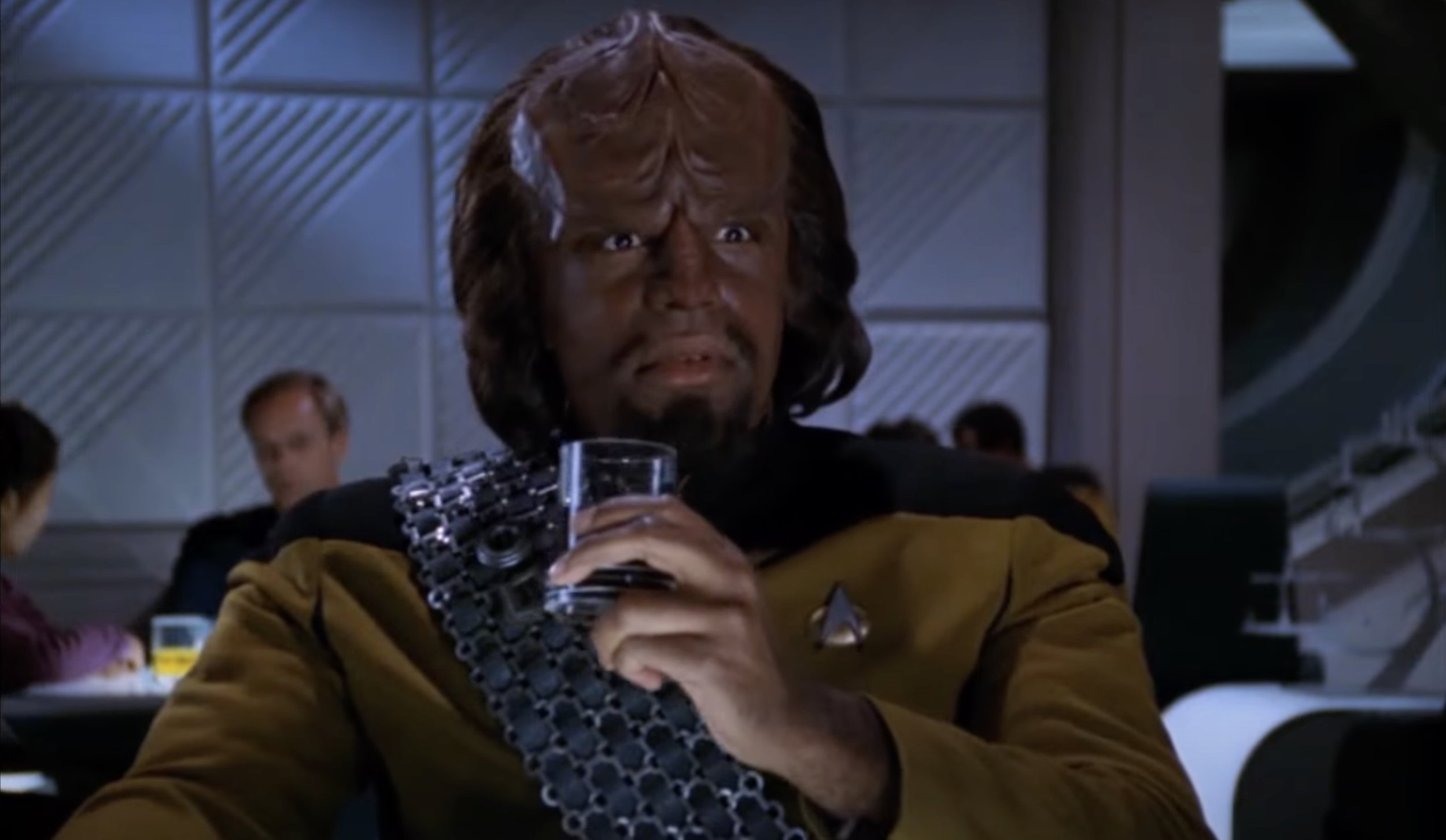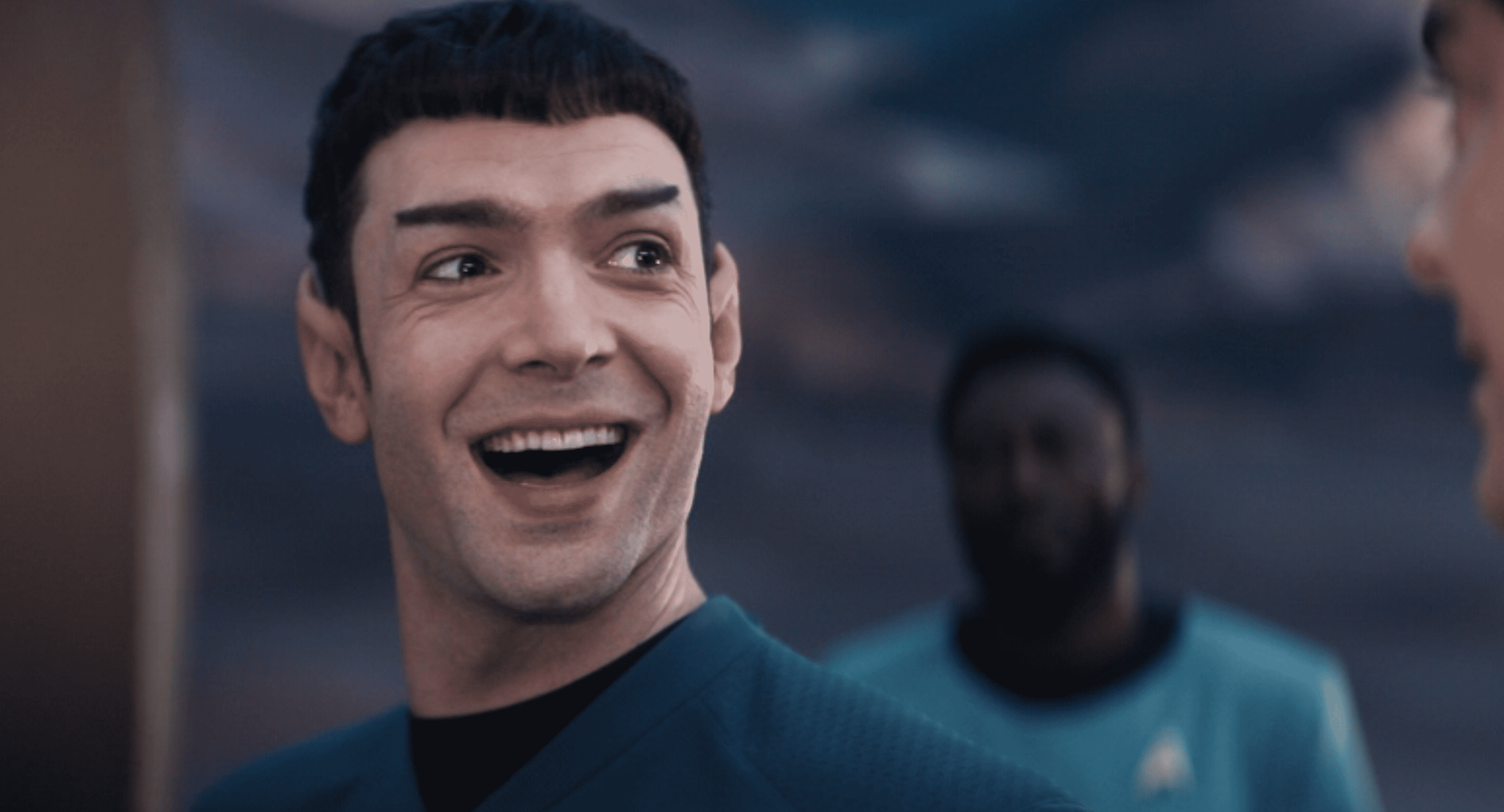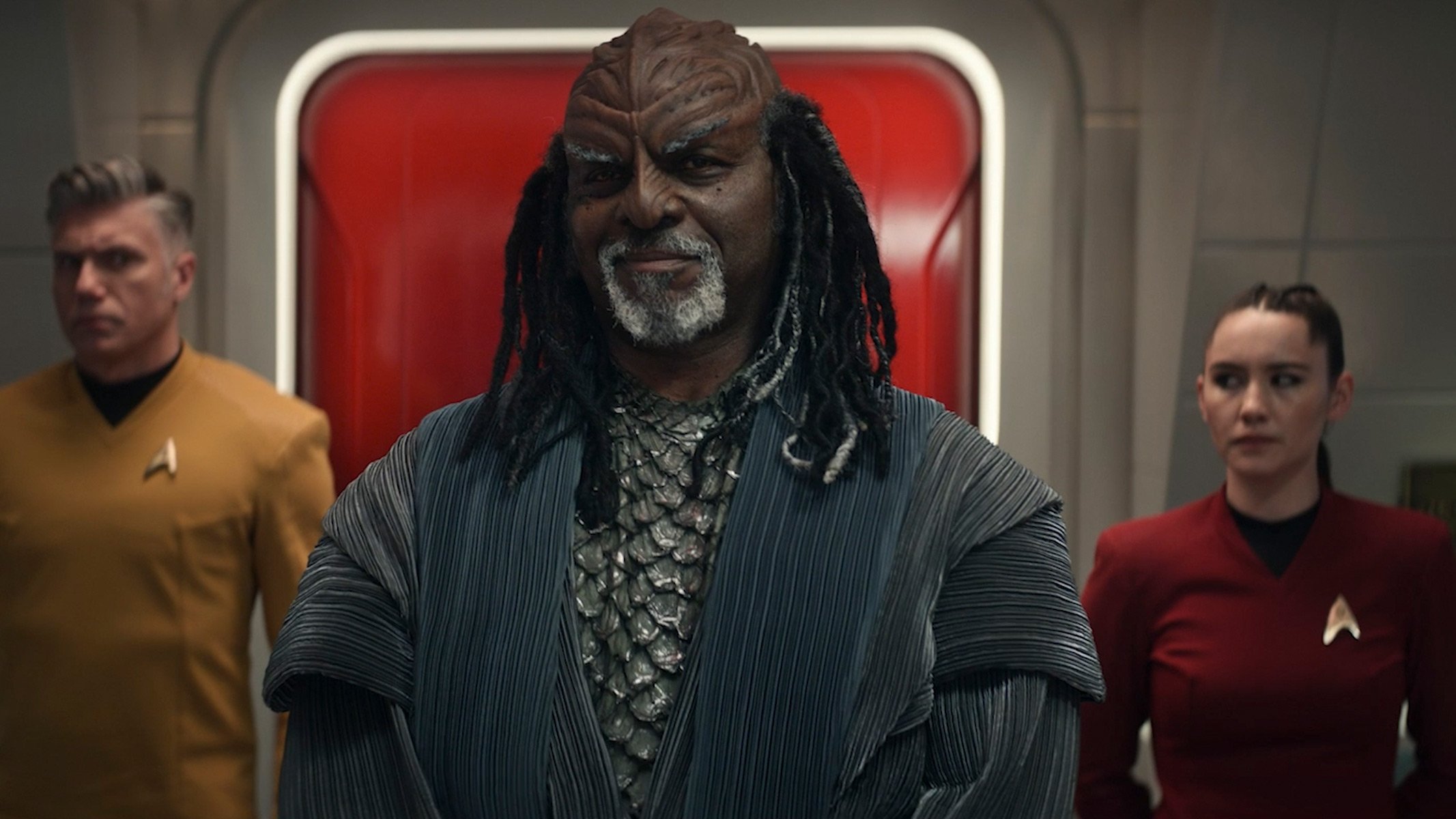‘Star Trek: Strange New Worlds’: A Defense of Klingon K-Pop
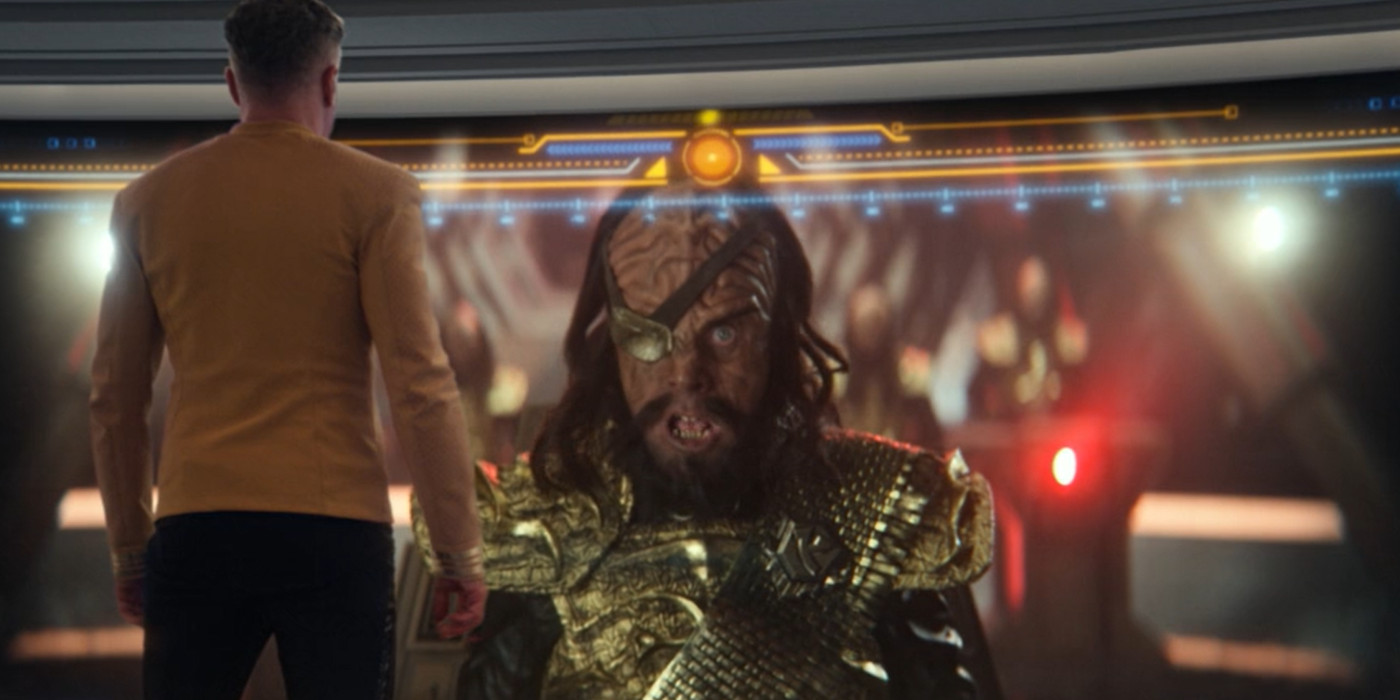
Of the many surprising risks taken in season two of Star Trek: Strange New Worlds, there is none more divisive than Klingon K-pop.
Cartoon crossovers. Laughing Spock. And, for the purposes of our discussion today, singing and dancing. Yes, Star Trek: Strange New Worlds is firing on every weird cylinder. And so far as we know, that trend will continue.
Is every big swing a home run? No. Sometimes you swing for the fences and taste nothing but air. Certainly, if you are of the opinion that there are too many gimmicks in SNW at the moment, you are not alone. However, while I do think a ten-episode season is too short for so many high-risk endeavors by percentage, I still think the rewards are sweet enough and push the franchise hard enough to be worthwhile.
Even Klingon K-pop. In fact, strike that: especially Klingon K-pop.
Even though I think the Strange New Worlds musical episode “Subspace Rhapsody” is the very definition of “mid,” its most controversial moment deserves defense, even respect. There are a number of reasons why I like it when the Klingons sound like they are about to songify the news. But this goes beyond like.
Klingon K-pop is important. Klingon K-pop is necessary. In fact, Klingon-K-pop may just be most the emblematic proof of why SNW‘s big risks are so worthwhile.
Klingon K-pop: A Textual and Subtextual Analysis
We can talk all day about whether or not the Klingons singing in a manner befitting BTS sounds good. But that’s down to taste. It is the most opiniony of opinions. What I would argue is less a matter of opinion is why the peoples of Qo’noS go full Schmoyoho (accent on the “yo”) happens in the first place.
A refresher: in “Subspace Rhapsody” sending music into a recently-discovered subspace fold dislodges a quantum uncertainty field causing all space (and the people in that space) to behave as though they are in a musical. And as the field travels over subspace, it isn’t long before practically half the quadrant goes full Dear Evan Hansen.
The Klingons, unsurprisingly, hate this.
As a result, they set out to destroy the subspace fold. One problem: to do so would destroy everything the fold made musical. Basically, this part of the plot continues the overall conceit that Klingons, on the whole, err on the side of “shoot first, ask questions never”. So imagine Pike and the Enterprise crew’s shock when the Klingons bring pop to the table rather than death metal.
In short, it’s the subversion of expectation. This goes double if you are a lifelong Star Trek fan who expects Klingons to sing either opera, drinking songs, and literally nothing else. Whether or not an individual likes how this ship of Klingons expresses themselves sonically is down to taste. However, ultimately, as comedy goes, the subversion works within the context of the episode.
So why, beyond an aversion to N’Sync, don’t people like this?
A Wild Son of Mogh Appears
There’s not much to know about the Klingon Empire during the Star Trek: The Original Series days. They are the Federation’s opposition. They’re the bad guys. But then Star Trek: The Next Generation comes along and changes everything by introducing Starfleet’s first-ever Klingon officer–Worf.
Worf, especially in the beginning, has a very strict code of behavior. And he likes talking about the ways of Klingons a lot. Actually, he loves talking about what his people DO NOT do. To hear Worf tell it, Klingons do not laugh, lollygag, get sick, play board games, or surf the internet for porn. To hear Worf tell it, Qo’noS is a world full of angry but honorable buzzkills.
Here’s the catch: Worf is not raised on Qo’noS. Because his family dies at the Khitomer Massacre (kind of), Worf grows up on Earth with adoptive, human parents. And as a result, Worf’s vision of his people is skewed. Because he feels like an outsider, Worf tries to be what he sees as a pure Klingon.
But there are no pure Klingons in the way Worf imagines. They don’t just laugh, Klingons laugh bigger than anyone. There are stoic Klingons, yes, but just as many live, laugh, love with the best that modern-day wine moms have to offer.
However, Worf is to Klingons as Spock is to Vulcans–he’s our main entry to point to his entire species. As a result, no matter how many times Klingons reveal themselves to be diverse and complex, some people will always see them the way Worf first presents them on TNG.
The Vulcan/Orion Connection
Star Trek, for all its claims at progressivism, spends much of its time expressing aliens in absolute terms. Vulcans are logical. The Ferengi are greedy capitalists. The Romulans are secretive. And, yes, the Klingons are often violent.
This trend stretches beyond just the major Star Trek species. Oftentimes, the alien-of-the-week hails from a planet that has one thing that guides an entire civilization. There are matriarch planets, planets ruled by supercomputers, clone planets, and everything in between. And when there’s not one civilization, there’s two — and they usually hate each other.
The thing about the streaming era of Star Trek is that it seeks to get away from the idea of alien culture as a monolith. Strange New Worlds season two spends a lot of time on this. Vulcans are not simply, coldly logical. We see this both through Spock laughing, T’Pring feeling betrayal, and a host of other Vulcans showing loads of emotion.
And in the Lower Decks crossover episode “Those Old Scientists,” Tendi’s assertion that not all Orions are pirates and slave traders is proven true when Enterprise encounters a ship full of Orions who want nothing more than to be scientists.
Under the Cloak of Pop Warfare
On Star Trek: Strange New Worlds, Vulcans laugh. Orions are scientists. The Aenar’s pacifism still includes fighting for certain beliefs. And the Klingons, opposition though they still are at this point in Trek history, are much more than just violent warmongers.
Consider the SNW episode “Under the Cloak of War” where Starfleet’s sole Klingon ambassador Dak’Rah comes aboard. He is often known as the “Butcher of J’Gal” because, according to him, in order to end the fighting between Starfleet and the Klingon Empire on J’Gal, he killed his own generals. And Rah goes to great lengths to define Klingons as inherently violent, even bloodthirsty.
But that’s not reality. Rah isn’t even the real Butcher of J’Gal–Dr. M’Benga is. In fact “Under the Cloak of War” goes to great lengths to show that humans like M’Benga, Chapel, and Ortegas are all as capable of violence in the face of war as any Klingon. And the Federation is hardly purely peaceful. They still paint the genetically modified people the Illyrians as inherently dangerous without evidence.
Rah thinks the path to peace lies in defining things in black-and-white terms. But that’s as much a lie as Rah’s claim that he is the Butcher of J’Gal. Defining the Klingons as a warlike race only breeds more distrust, more discord, and more war. The truth, though harder to swallow, that all cultures are complex, all different within themselves, is the only true path to peace.
Humans from other cultures, much like Star Trek aliens, are never monolithic. Sometimes, maybe even oftentimes, the perceived other is not what you think at all. Sometimes your enemy is nothing like you imagine.
And sometimes, just sometimes, Klingons sing K-pop.

